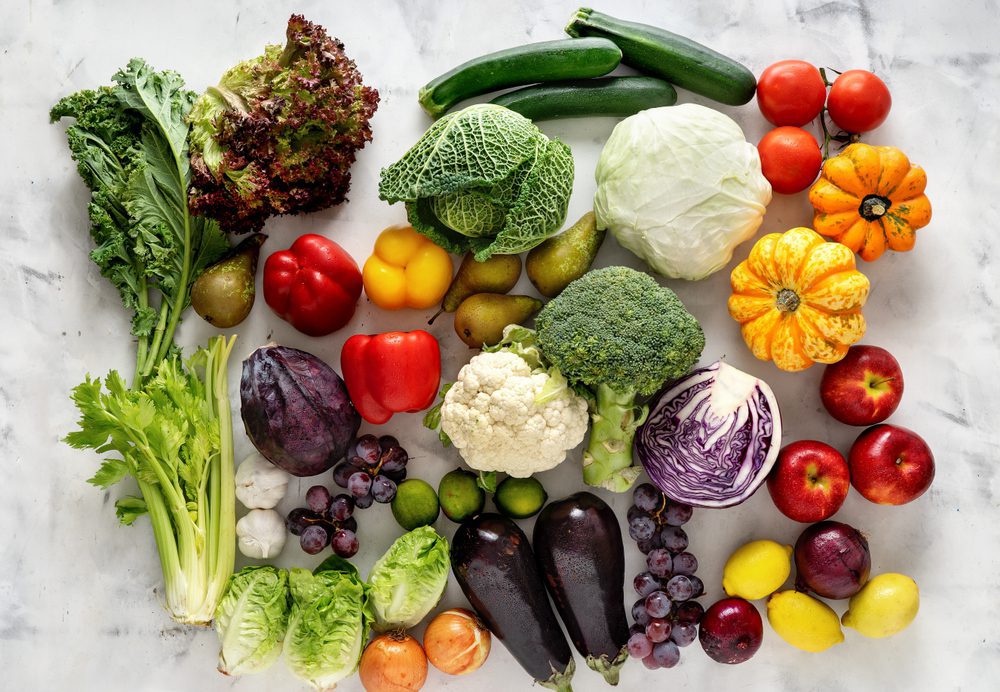Introduction
Saturday 4th February 2023 will be World Cancer Day, the focal point of a campaign to raise awareness about the prevalence, impact, and treatment of cancer around the world. As we approach the day I have dedicated this blog post to a look at how we may be able to help ourselves to reduce the risk of developing cancer through improvements in the choices of what we eat. I will do this by highlighting some of the strongest evidence linking healthy eating to cancer prevention.
In the UK someone is diagnosed with cancer every 2 minutes. Over the course of a year that adds up to 375,000 new cases. Sadly, the trend is on the increase, with a rise of 12% in cancer incidence from the early 1990s up to the present day. This figure is also set to rise again in the future; another 2% increase by 2035.
https://www.cancerresearchuk.org/health-professional/cancer-statistics/incidence
The changes in diet over the last century, and particularly over the last 40 years, have significantly contributed to the increases in cancer prevalence. Elevated consumption of meat, dairy produce, and processed foods have damaged our gut health (a condition known as gut dysbiosis) and created conditions where cancers can develop. The fall in the consumption of fresh fruits and vegetables, as processed foods have taken over, has accelerated the development of cancers as it is these very foods (the fruits and vegetables) that actually have cancer-fighting properties. I am going to take a look at 2 particular areas where we can make better food choices to lower our risk of developing cancers, namely increases in fibre and in plant food variety.
How increased fibre in the diet leads to better health outcomes
To start with the scientific evidence, in a major review of research published by Andrew Reynolds and colleagues in 2019 higher intakes of dietary fibre were shown to be protective against colorectal, breast, and esophageal cancers.
https://www.thelancet.com/article/S0140-6736(18)31809-9/fulltext
In a study (Song and colleagues, 2018) following 1,575 people with colorectal cancer, researchers found that consuming more dietary fibre helped people to live longer. In fact, they had an 18% lower risk of death for every 5g per day of increased fibre consumption. That is some really strong research evidence showing associations between fibre consumption and reduced cancer risk. Our next task is to take a look at the processes which make that happen.
It used to be thought that the human body couldn’t digest fibre and that it’s only purpose was to bulk up food to aid its transit through the digestive system. That thinking has been updated by new research in the last 20 years, which has shown that fibre can indeed be broken down in the body and, not only that, the products of fibre metabolism, known as postbiotics, confer huge health benefits. This includes protection against the development of cancers.
Meat, dairy, and eggs don’t contain any fibre. To be clear, that’s ZERO fibre. Instead, we have to get our fibre fix from plant foods and there is no end to the choices at our disposal; beans, lentils, starchy vegetables like potatoes and squash, leafy green vegetables, whole grains, fruits and berries, nuts and seeds. Now we’ve cleared that up, let’s take a look at the process by which dietary fibre can be cancer-protective.
In dietary terms, fibre is what is known as a prebiotic. When fibre-rich foods reach the gut (intestines) they are digested by trillions of gut bacteria. These bacteria are known as probiotics. You may have seen probiotics or probiotic supplements advertised. The result of the probiotics (bacteria) digesting the prebiotics (fibre) is the production of postbiotics; in this case, short-chain fatty acids (SCFAs).
According to world-renowned gastroenterologist Dr. Will Bulsiewicz, short-chain fatty acids are the most healing nutrient in all of nature. In relation to cancer prevention, here’s why.
Firstly, SCFAs correct dysbiosis, an imbalance of the bacteria in the gut microbiome. This dysbiosis has been associated with the development of colorectal, gastric, esophageal, pancreatic, laryngeal, gallbladder, and breast cancer. Therefore, SCFAs help to create an environment where cancers don’t thrive. However, helping to create and maintain a healthy gut aren’t the only ways in which SCFAs help to prevent cancer, they can also slow or stop cancer growth. Here’s how.
Cancers grow as a result of unchecked multiplication of malignant cells. Before being able to divide and multiply the malignant cell must copy its own DNA. Substances called histone deacetylases (HDACs) are required for this process to occur and if HDACs can be inhibited then malignant cell multiplication will be shut down. The SCFA butyrate is known to inhibit HDACs, thus inhibiting the unchecked proliferation of cancer cells. This is an amazing protection against the development of cancer and a strong signal that we should include more fibre in our diets.
The other key plant food nutrients that have cancer-protective effects are phytochemicals, or “chemicals from plants”, to put it more simply. Each plant food contains different combinations of phytochemicals and the colour of the food has an influence of which ones are in the food.
The concept of eat the rainbow, what phytochemicals are and how the colour of foods matters
If you have been reading articles on healthy eating, listening to podcasts, watching interviews on YouTube you may have heard the term, “Eat the Rainbow”, which is a call to eat a wide variety of different coloured fruits and vegetables to benefit your health. It may seem overly simplistic, but there is some strong evidence that one of the best ways in which we can improve the healthfulness of our diet is to eat a wide variety of fruits and vegetables of different colours.
There are over 8,000 known phytochemicals, most of which haven’t been studied in detail. However, around 150 of them have and their cancer-protective effects are clear. The table below shows how the plants of different colours contain different phytochemicals.
| Colour | Plant | Phytochemicals | Benefits |
| Red | Tomatoes, watermelon | Lycopene | Protects against prostate cancer |
| Yellow-orange | Oranges, lemons, peaches | Limonoids, flavonoids | Cancer protective |
| Green | Spinach, kale, spring greens | Chlorophyll, lutein | Cancer protective |
| Green-white | Broccoli, Brussels sprouts, cabbage, cauliflower | Indoles, isothiocyanates | Very strongly cancer protective |
| White-green | Garlic, onions, chives, asparagus | Allyl sulphides | Reduces risk of stomach cancer |
| Blue | Blueberries, blackberries | Anthocyanins | Cancer protective |
| Brown | Whole grains, legumes | Fibre | Cancer protective |
Increasing your plant food diversity is clearly beneficial, but might not seem so straightforward so in the last section I have highlighted a few simple changes that should set you on your way to eating the rainbow.
Ideas for increasing the plant diversity of your diet

Porridge with plenty of toppings
On top of your jumbo oats, add nut butters, nuts, seeds, and fresh or dried fruits.
Mixed bean salad
Start with your favourite beans or chickpeas and add chopped crunchy veg such as cucumber, tomatoes, peppers, beetroot, carrots, onions, kale, cabbage,peas, and sweetcorn. Flavour with chopped fresh herbs and a vinaigrette (vinegar, soy sauce, maple syrup etc). You can boost the fibre with lentils or grains like rice, bulgur wheat, or pearl barley.
Vegetable soup
Here is another chance to really boost the variety of plants in your diet by choosing or making a soup with a selection of carrots, onions, peas, leeks, cabbage, kale, sweetcorn, broccoli and cauliflower. Soups with beans, lentils, and pearl barley also have masses of fibre.
Smoothies
There is infinite choice when it comes to blending together fruits and vegetables to make a healthy meal-drink and smoothies way outperform juices because they still keep the original fibre that juices don’t have.





